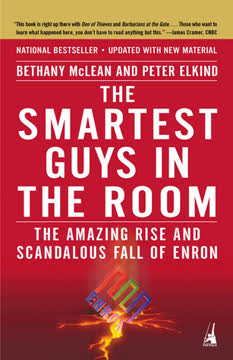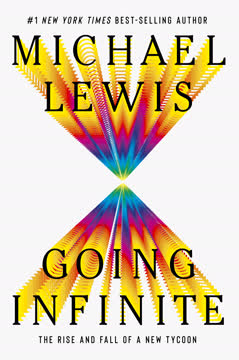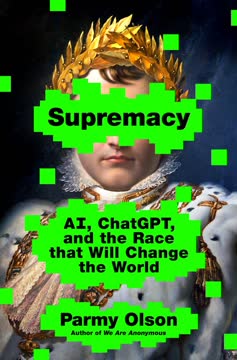Key Takeaways
1. Ambition and Inexperience: A Recipe for Disaster
Success had always been my primary motivating force but my biggest failure far outweighs any successes that I may have had.
Driven by ambition. Nick Leeson's story begins with a young, ambitious individual eager to prove himself in the high-stakes world of finance. His early successes and promotions fueled his desire for more, blinding him to the risks he was taking. This ambition, coupled with a lack of experience, created a dangerous combination.
Inadequate oversight. Leeson's rapid ascent within Barings Bank was not matched by adequate training or supervision. He was given significant responsibilities without the necessary expertise or oversight, setting the stage for his eventual downfall. The bank's culture, which prioritized profits over caution, further exacerbated the situation.
Early warning signs. The initial errors and small losses that Leeson incurred should have served as red flags. However, his superiors were either unaware or unwilling to address these issues, allowing them to snowball into a much larger problem. This failure to recognize and address early warning signs is a recurring theme throughout the book.
2. The Illusion of Control: Trading on the Edge
I was learning to look three seconds ahead at best.
Living in the moment. Leeson's trading strategy was characterized by short-term thinking and a focus on immediate gains. He was constantly reacting to market fluctuations, rather than developing a long-term plan. This approach created a sense of urgency and a need to constantly be "in control," which ultimately led to reckless decisions.
Proprietary trading. The shift from order-filling to proprietary trading marked a turning point in Leeson's career. He was now responsible for making his own decisions and taking on significant risks with the bank's money. This newfound freedom, combined with his limited experience, proved to be a dangerous combination.
Ignoring the risks. As Leeson's losses mounted, he became increasingly desperate to recoup them. He began to take on even greater risks, ignoring the potential consequences. This "doubling down" strategy only served to amplify his losses and further entrench him in his predicament.
3. The Descent into Deceit: Hiding the Truth
I was the only person in the world to be able to operate on both sides of the balance sheet. It became an addiction.
The error account. The creation of Error Account 88888 marked the beginning of Leeson's descent into deceit. This account, initially intended for minor clerical errors, became a dumping ground for his mounting losses. This allowed him to conceal the true extent of his trading activities from his superiors.
Forging documents. As the losses grew, Leeson resorted to increasingly desperate measures to cover his tracks. He began to forge documents, falsify records, and mislead auditors. These actions further entangled him in his web of deceit and made it increasingly difficult to escape.
A growing addiction. The act of concealing his losses became an addiction for Leeson. He reveled in the power and control it gave him, even as it spiraled out of control. This addiction blinded him to the consequences of his actions and made it impossible for him to stop.
4. The House of Cards: A Systemic Failure
The key questions are: a) how were the massive losses incurred? b) why was the true position not noticed earlier?
Lack of oversight. Barings Bank's internal controls were woefully inadequate. Leeson was able to operate with minimal supervision, allowing him to conceal his activities for an extended period. This lack of oversight was a major contributing factor to the bank's collapse.
Conflicting roles. Leeson held multiple positions within the bank, giving him control over both trading and settlements. This created a conflict of interest and allowed him to manipulate the books without detection. The bank's failure to separate these functions was a critical oversight.
Ignoring warning signs. Despite numerous red flags, Barings Bank failed to take action. The bank's culture, which prioritized profits over caution, blinded it to the risks Leeson was taking. This failure to heed warning signs ultimately led to the bank's demise.
5. Personal Cost: The Erosion of Morality
I was overwhelmed by this problem every day for two years, and now my wife didn’t understand why I’d done it.
The burden of secrecy. The weight of his deceit took a heavy toll on Leeson's personal life. He became increasingly isolated and withdrawn, unable to share his burden with anyone. This secrecy strained his relationships and eroded his sense of morality.
Justifying the means. As Leeson's losses mounted, he began to justify his actions as necessary to protect his job and the livelihoods of his colleagues. This rationalization allowed him to continue down a path of increasingly reckless behavior.
Loss of perspective. The pressure to succeed and the constant need to conceal his losses distorted Leeson's perspective. He lost sight of the true value of money and the consequences of his actions. This loss of perspective ultimately led to his downfall.
6. The Inevitable Collapse: Running Out of Time
I was now firmly on one side of the market. Up until now I’d been able to sell the whole 88888 position and change it to all short, but now I doubted I could sell out.
The market turns. The Kobe earthquake proved to be the catalyst for Leeson's downfall. The market turned against him, and he was unable to recoup his losses. This event exposed the fragility of his position and set in motion the events that would lead to Barings Bank's collapse.
Desperate measures. As the losses mounted, Leeson became increasingly desperate. He took on even greater risks, hoping to turn the situation around. These actions only served to amplify his losses and hasten the inevitable collapse.
The final act. In a final act of desperation, Leeson fled Singapore, leaving behind a trail of destruction. This decision marked the end of his career and the beginning of his legal troubles.
7. Flight and Capture: The World Closing In
We were in the middle of nowhere, halfway along the north coast of Borneo. We were in a prison. How the hell were we going to get out?
On the run. Leeson's attempt to escape justice was short-lived. He and his wife were tracked down to a remote resort in Borneo, where they were apprehended by authorities. This capture marked the end of their freedom and the beginning of a long legal battle.
Media frenzy. The collapse of Barings Bank and Leeson's subsequent flight generated a media frenzy. The world was captivated by the story of the "rogue trader" who had brought down a centuries-old institution.
Extradition battle. Leeson fought extradition to Singapore, but his efforts were ultimately unsuccessful. He was eventually returned to Singapore to face charges related to his trading activities.
8. Aftermath: Facing the Consequences
Unfortunately, it will also be the period of my life that I am always remembered for.
Imprisonment. Leeson was sentenced to six and a half years in a Singaporean prison. His time in prison was marked by hardship and isolation.
Reflection and remorse. During his imprisonment, Leeson had time to reflect on his actions and the consequences they had for himself and others. He expressed remorse for his behavior and acknowledged the damage he had caused.
A changed man. After his release from prison, Leeson sought to rebuild his life. He remarried, had children, and became a sought-after speaker and consultant on risk management. While he can never fully escape his past, he has attempted to learn from his mistakes and use his experience to help others avoid similar pitfalls.
Last updated:
Review Summary
Rogue Trader receives mixed reviews, with an average rating of 3.93 out of 5. Readers find it a compelling account of financial fraud, offering insights into banking practices and human psychology. Many praise Leeson's honest portrayal and accessible explanations of complex financial concepts. However, some criticize his attempts to shift blame and lack of remorse. The book is valued for its historical significance and as a cautionary tale, though opinions vary on Leeson's character and the book's literary merits.
Similar Books










Download PDF
Download EPUB
.epub digital book format is ideal for reading ebooks on phones, tablets, and e-readers.




